Schools can grant leave to pupils for the purpose of studying for public exams. The guidance (pdf) states that study leave “should not be granted by default once tuition of the exam syllabus is complete and should be used sparingly”.
A reader of the blog wondered how consistently this type of leave is being granted. So we thought we’d take a look using data from around 2,500 of our Aspire Attendance Tracker secondary schools, covering around 450 thousand Year 11 pupils.
We’ll focus on the three weeks leading up to the May half-term holiday, from Monday 5th to Friday 23rd May. These were the first three weeks of the GCSE exam period.
Year 11 weekly absence
Let’s start by looking at the percentage of sessions missed by Year 11 pupils due to absence across the year. We’ll look at authorised and unauthorised absence separately. Study leave is classed as an authorised absence (along with other types of absence authorised by a pupil’s school. A large majority of authorised absence is typically due to illness).
We see a familiar pattern in each of the first four half-terms of the year: both authorised and unauthorised absence tend to increase as term goes on, with spikes in the weeks leading up to Christmas and Easter (the spike at Easter was particularly sharp this year due to Eid-al-Fitr falling in term-time).
In the final half-term though, we see a big jump in authorised absence between the last week of April and the first full week of May, from 5.8% to 9.5%. There’s then a small increase in the second week of May, to 10.0%, followed by a bigger increase in the third week, to 12.4%.
By reason code
Given that this jump in authorised absence coincides with the start of GCSE exams, it’s likely to be caused by study leave. We can confirm this by looking at the reasons for absence recorded in schools’ registers for this period.
Below we plot the percentage of sessions missed by Year 11 pupils due to authorised absence in each week of April and May, split by reason.
As suspected, these increases are driven by sessions recorded as study leave. The overall increase in authorised absence across May actually understates the increase in study leave, because absence recorded as illness decreased.
Overall, in the three weeks before the half-term break, 6.3% of sessions for Year 11 pupils were recorded as study leave.
Distribution by pupil and school
Now let’s dig down a little. 6.3% of sessions is an average. We could arrive at this figure by 6.3% of schools granting all of their pupils three weeks of study leave, and all other schools granting none. Or by all schools granting all of their pupils 6.3% of sessions of study leave across the three weeks (equivalent to roughly one session – a morning or an afternoon off). The reality will be somewhere between these two extremes.
To see where, we first plot the percentage of schools by the percentage of their pupils granted at least one session of study leave in each week.
In all three weeks, a majority of schools granted either no study leave at all, or only granted it to fewer than 5% of their pupils.
Schools who granted study leave to almost all pupils were in the minority, though this became more common in each successive week.
These two patterns together give us quite a polarised picture, particularly in the last week of term. Schools tended to either grant leave to, at most, a small number of pupils, or to almost all of their pupils. The former group is larger than the latter.
What this doesn’t tell us is how much study leave each pupil was granted. For example, pupils in the 22% of schools where almost all pupils had study leave in the final week of term might have only missed a session or two, or they might have missed the whole week.
We again plot the proportion of schools according to the percentage of pupils with any study leave, but this time we break each bar down according to the average amount of study leave per pupil (ignoring pupils who didn’t have any).
Having more than three days of study leave seems to be quite rare, and became increasingly rare in each successive week. This may be due to pupils being marked as present (or absent) rather than on study leave on exam days.
In the final week of May, just 2% of schools granted at least three days of study leave to the majority of their pupils.
Types of schools
To finish, let’s look at how the picture varies by school type. We’ll divide schools into three groups: those with no pupils on study leave, some pupils on study leave (fewer than 50% of pupils with at least one session of study leave), and most pupils on study leave (50% or more pupils).
Below, we plot the proportion of schools falling into each of these categories by school type: selective schools vs non-selective academies vs other non-selective schools.
In each week, the majority of selective schools granted the majority of their pupils at least one session of study leave (59% of selective schools in the first week of May, 69% in the second, and 73% in the third).
Very few non-selective schools granted study leave to the majority of pupils in either of the first two weeks of May (4% in the first week, 9% in the second). The number increased in the final week of May (22%), though was still much less common than selective schools.
Even in the final week of May, around 40% of non-selective schools granted no pupils study leave, (compared with 20% of selective schools).
Summing up
Year 11 pupils were increasingly likely to be recorded as being on study leave in each successive week in May.
Selective schools were much more likely than non-selective schools to grant a majority of their pupils at least some study leave in each week, while non-selective schools were much more likely than selective schools to not grant any of their pupils study leave.
Blanket study leave policies, where the majority of pupils are recorded as being on study leave for the majority of the time, seem to be quite rare. However, it’s hard to say for sure because we don’t know how schools recorded attendance on exam days.
Want to stay up-to-date with the latest research from FFT Education Datalab? Sign up to Datalab’s mailing list to get notifications about new blogposts, or to receive the team’s half-termly newsletter.



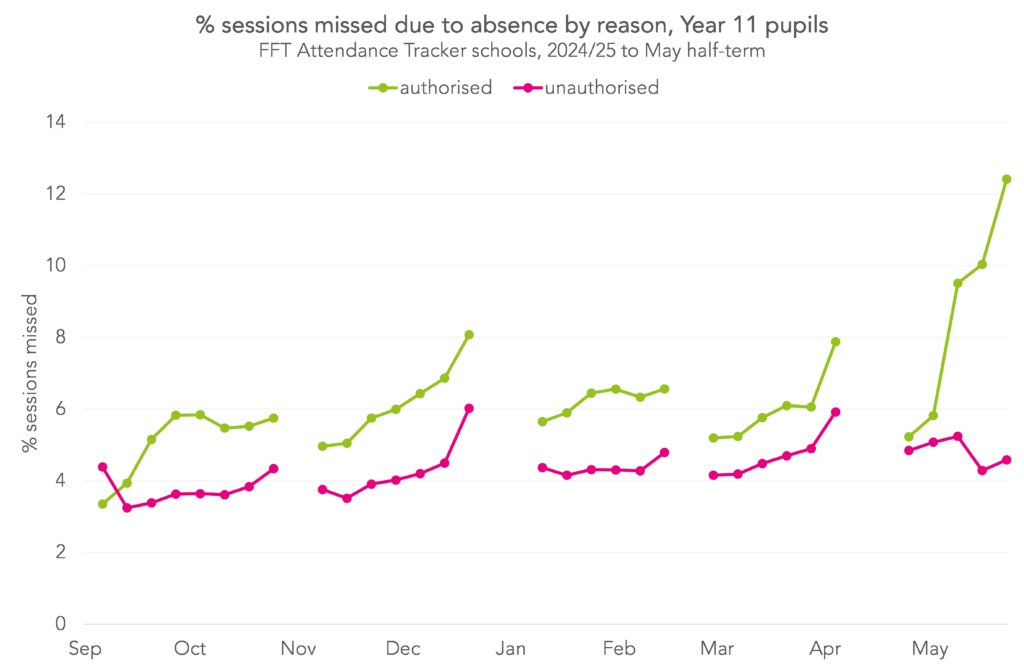
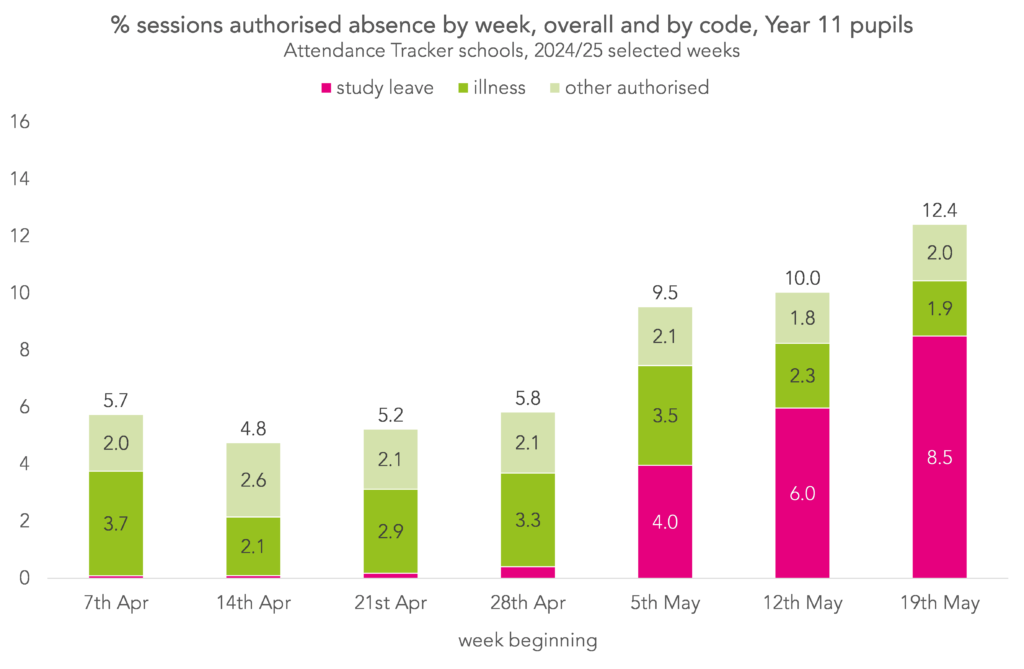
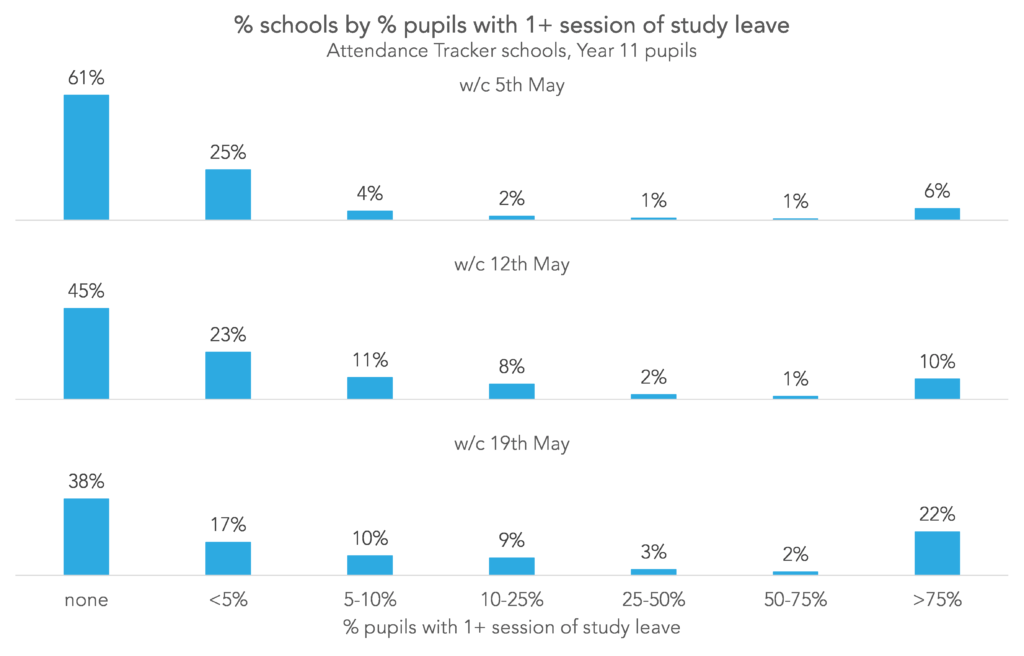

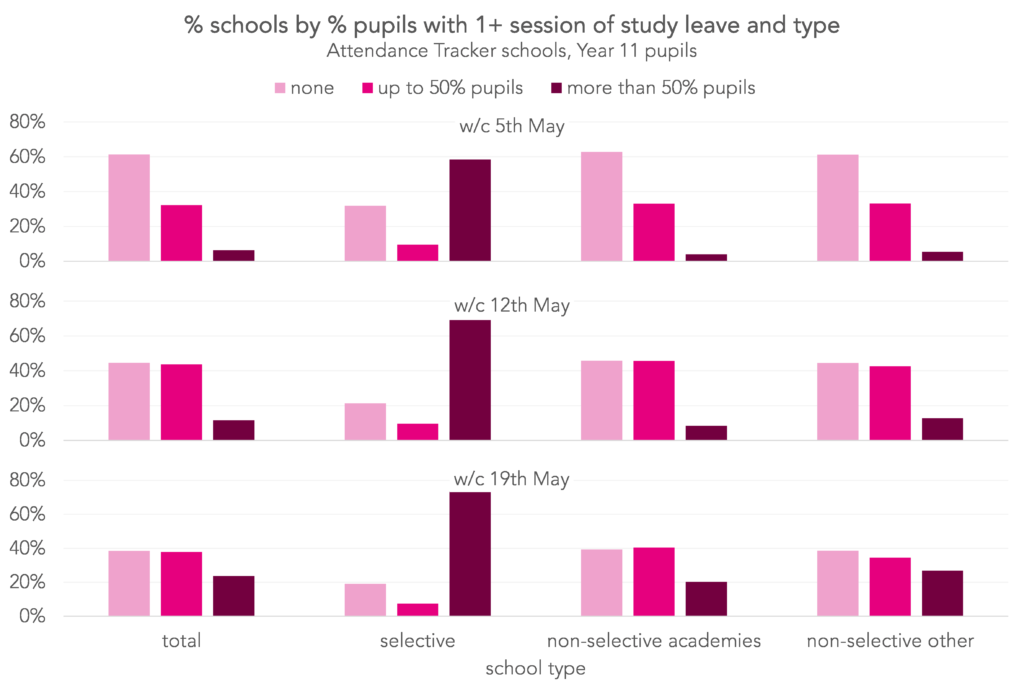
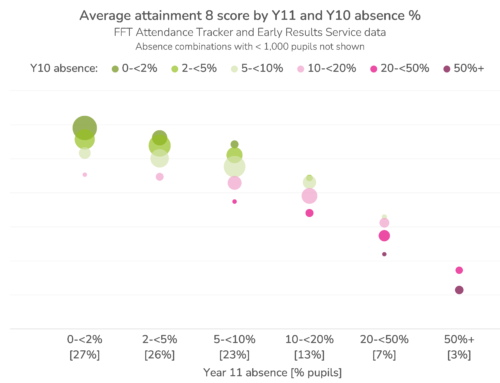
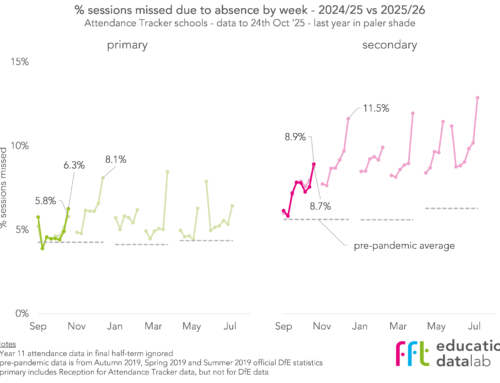
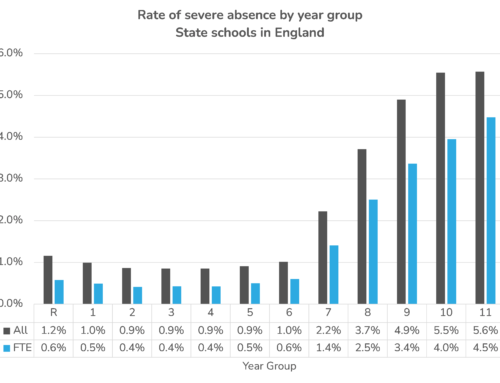
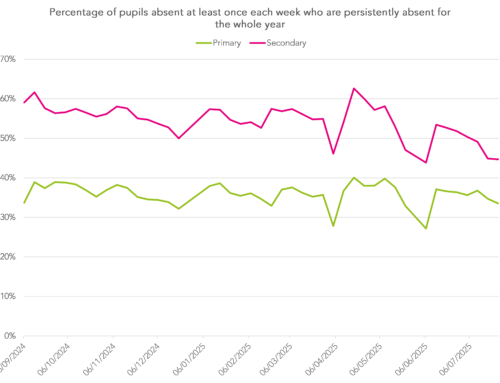
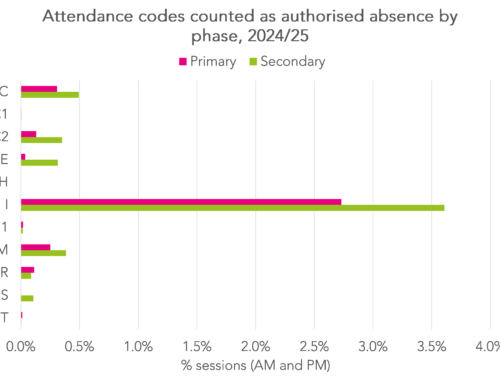
This is really interesting! I’d be very curious how this developed after Half Term if you could do a follow up article.
Does this take into account the actual exams – presumably most schools mark students as present for these sessions?
No, we’ve only counted sessions marked as “S” as study leave, as we can’t distinguish between a present mark meaning “in school learning / revising” or “in school to do an exam”. We might be able to dig down a bit further when we’ve processed all of the pupil-level data at the end of term, but I expect it’ll be a bit complicated due to the number of exams and variety of subjects pupils take.
Yes, but how is it correlated to progress?